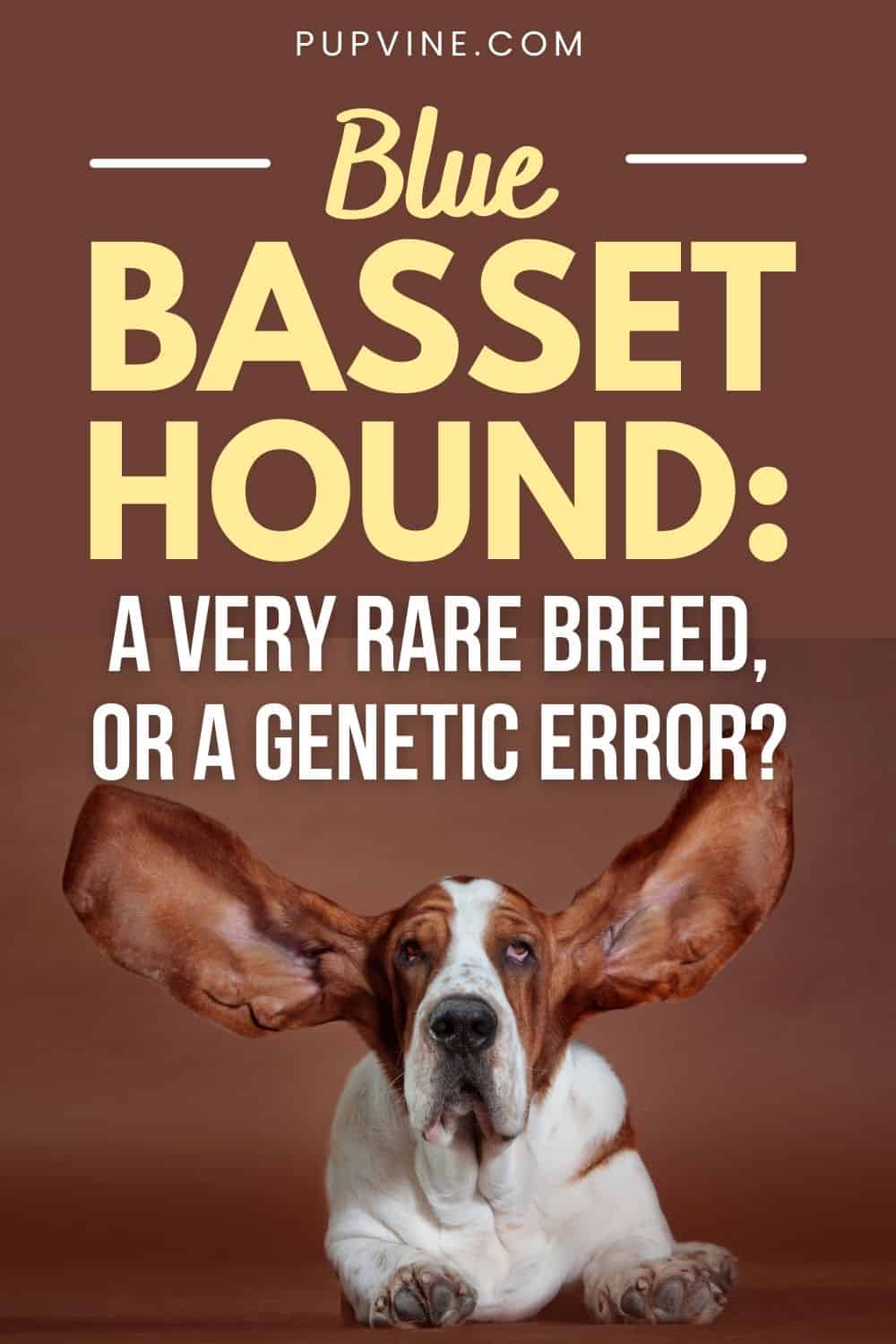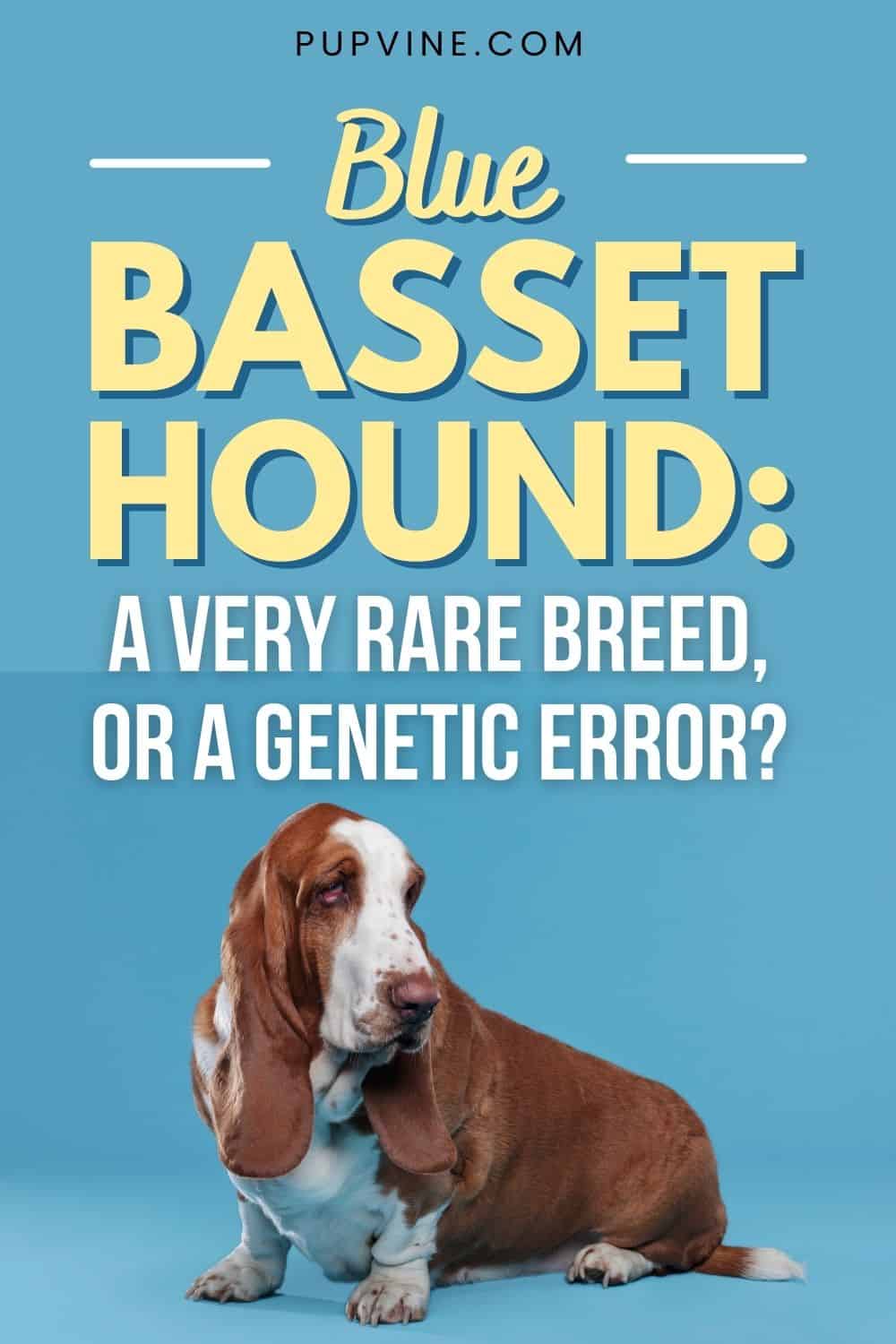Now, we know what you’re thinking after reading that title… Wait, what? A BLUE Basset?
Yes, there really are Blue Basset Hounds! Well, they’re not strictly blue. If you’re imagining something that resembles a smurf on all fours, you’re barking up the wrong tree, so to speak.
The world of dog breeding, kennel clubs, and canine genetics is a complex one, with many strict rules and fierce debates (or arguments). One of these debates centers around the Blue Basset Hound. Through no fault of their own, these dogs have become the focus of controversy, with some experts claiming that they are nothing more than a genetic fault.
We’re going to try and unravel the mystery and bring some clarity, or at least help you to form your own opinion on the matter. Along the way, we’ll learn more about this most gentle of dogs… the wonderful, loveable Basset Hound.
Let’s start with an overview of the regular Basset before diving into our quest for enlightenment.
The Basset Hound
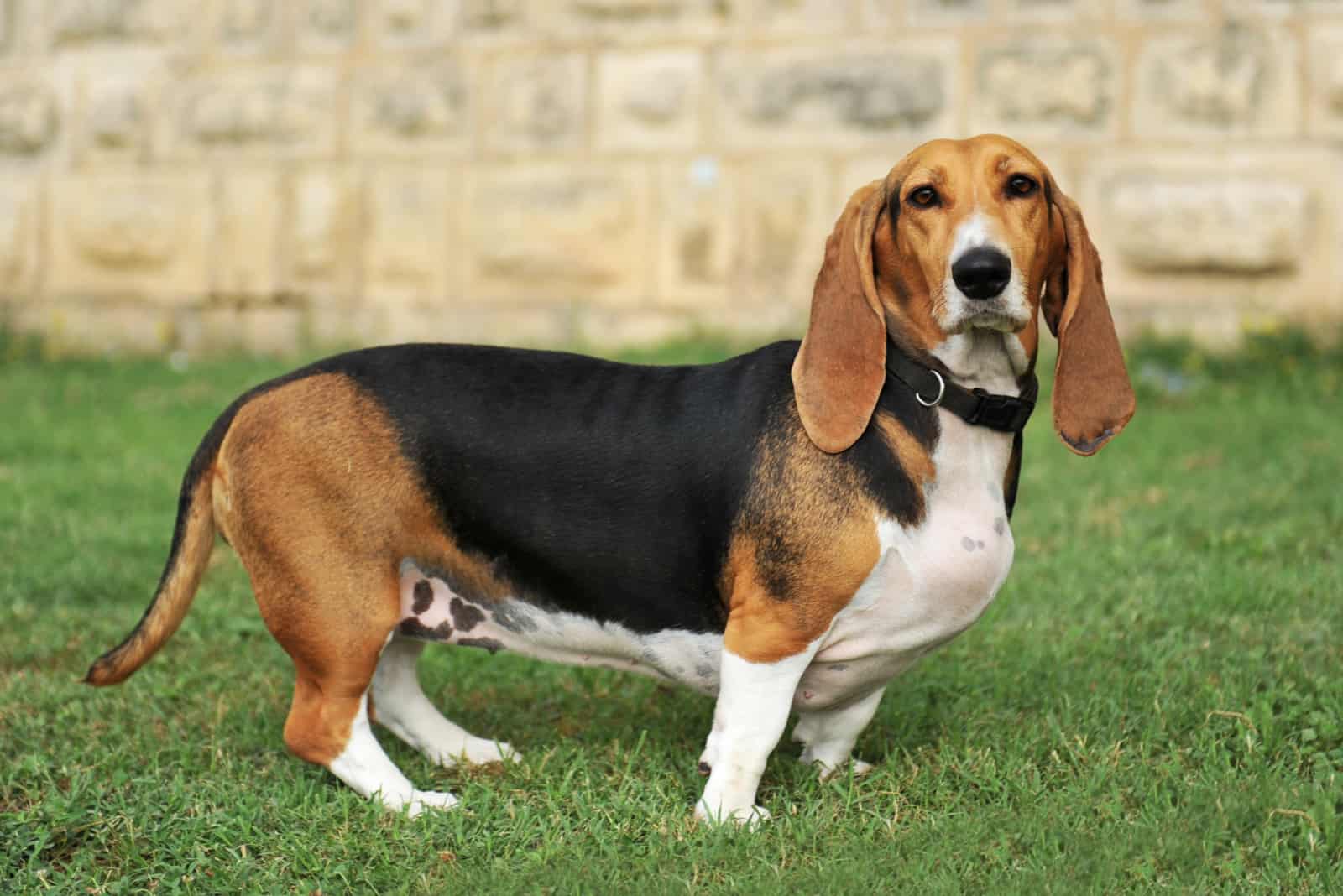
Basset Hounds are one of the most endearing and comical of dog breeds, with their short legs, sad-looking eyes, and long ears. They are captured brilliantly in the comic strips and cartoons of Fred Basset and Droopy, which have entertained us for decades. They are loved for their easy-going nature and friendliness. They have a lot of patience with kids, and bags of stamina to keep up with you during those long walks.
Yes, they can be obstinate at times, but when they look up at us with those saggy eyes, we can’t help but forgive them. And, when that tail begins to wag, we can’t resist a smile.
Another trait that makes them popular is that they’re very good around other dogs and pets as they generally don’t display any aggression towards other animals.
For a short dog, they’re surprisingly big. Although they only stand at around 15 inches at the shoulder, they can weigh between 40 and 65 pounds!
Their origins lie in France, where they were bred by French monks for the aristocracy as hunting dogs. Like most hound breeds, they are much more likely to be kept as pets these days than used for hunting.
They were prized for their tracking abilities as scent hounds, which is something that continues to this day; their sense of smell is second only to the Bloodhound. However, this skill is mostly used these days for competitions and trials.
Read More: European Vs American Basset Hound
What Is A Blue Basset Hound?
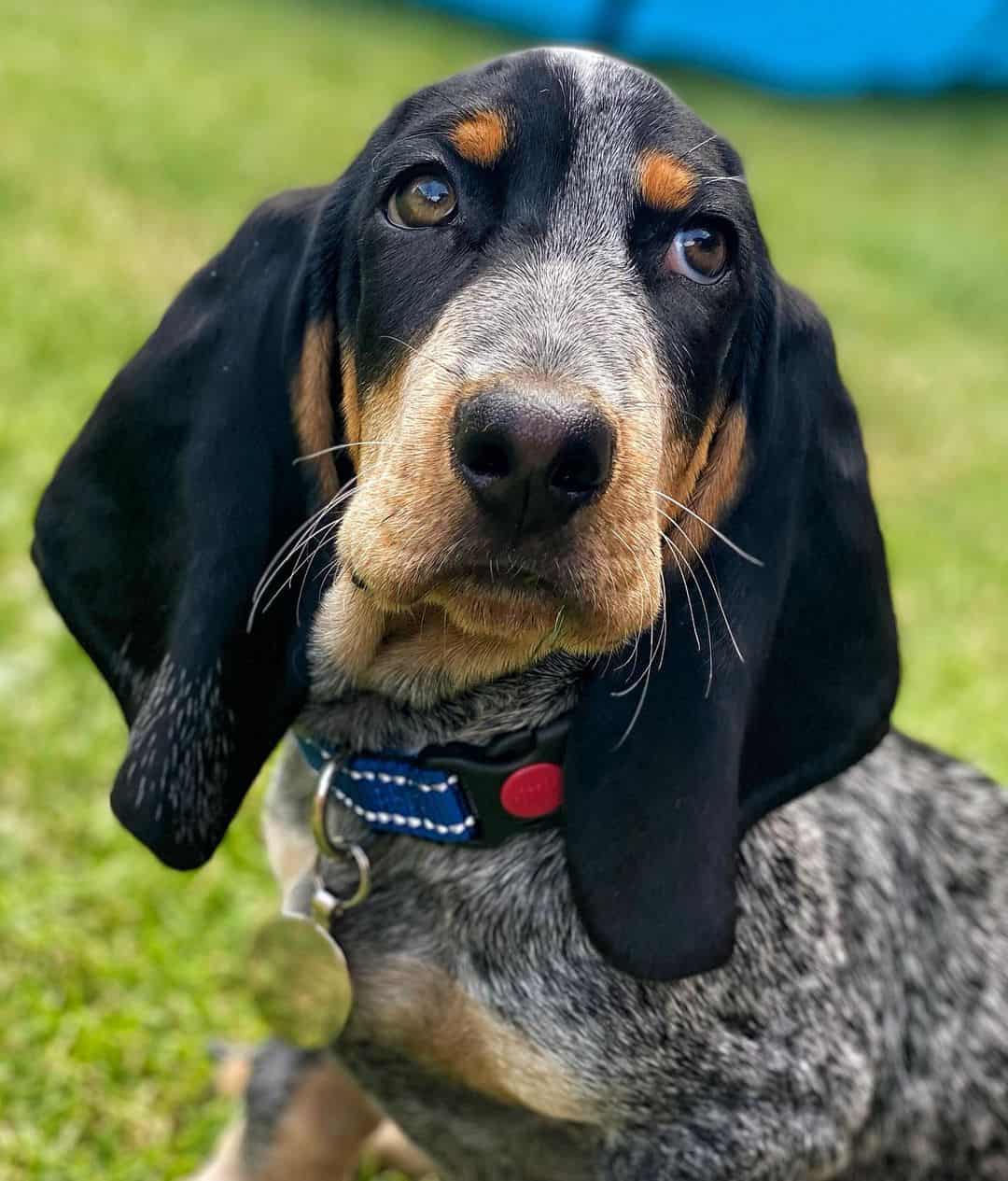
Photo from: @eddiebassetbleu
This is where things start to get confusing.
In 14th century France, a breed existed called the Grand Bleu de Gascogne, which looked similar to today’s Basset Hound dog but had longer legs.
From these, a smaller breed was created, called the Basset Bleu de Gascogne (or Blue Gascony Basset), used for hunting small game such as rabbits and hares.
By the early 20th century, this breed was on the verge of extinction, but was saved when a man named Alain Bourbon took on their cause.
They are still considered a rare breed today, and are not usually seen outside of France – although it has been suggested that there are actually more of these dogs in the USA than there are in their homeland! This is impossible to prove, as the AKC does not keep records of them.
The ‘blue’ in the title comes from their distinctive white coat with blue ticking, meaning that there are little spots of color. These spots give the dog a blue hue, but are, in fact, a diluted form of black.
Now we come to the Blue Basset Hound. The dogs we recognize today as Basset Hounds were developed in England from French dogs descended from the St. Hubert Hound. Some of these dogs display a sort of blue (more like a gray) color in their coat due to a recessive gene that surfaces sometimes.
This gene causes a ticking pattern on the coat, which gives the illusion of a dusky blue color.
The reason for the controversy is that some enthusiasts believe that the Blue Basset Hound is a direct descendant of the Blue Gascony Basset, or is, in fact, one and the same breed!
The word basset often causes confusion, too. ‘Basset’ is simply a French term, meaning ‘low’; a reference to the fact that the dog’s short legs ensure that its nose is close to the ground making it easier to follow a scent.
There are six different Basset breeds, all originating from France, and some people even claim that the Dachshund should be added to the list as it has a similar body type.
So, we have the Basset Bleu, which is a rare breed from France, and the Blue Basset Hound, which is possibly a rare coloring in the everyday Basset Hound, although some people claim that the two are related or are the same breed. When people refer to the Blue Basset Hound, they are usually talking about the latter, but it is always wise to make sure.
Now that that’s (hopefully) cleared up, let’s see what else we can discover!
What Are The Different Colors Of Basset Hounds?
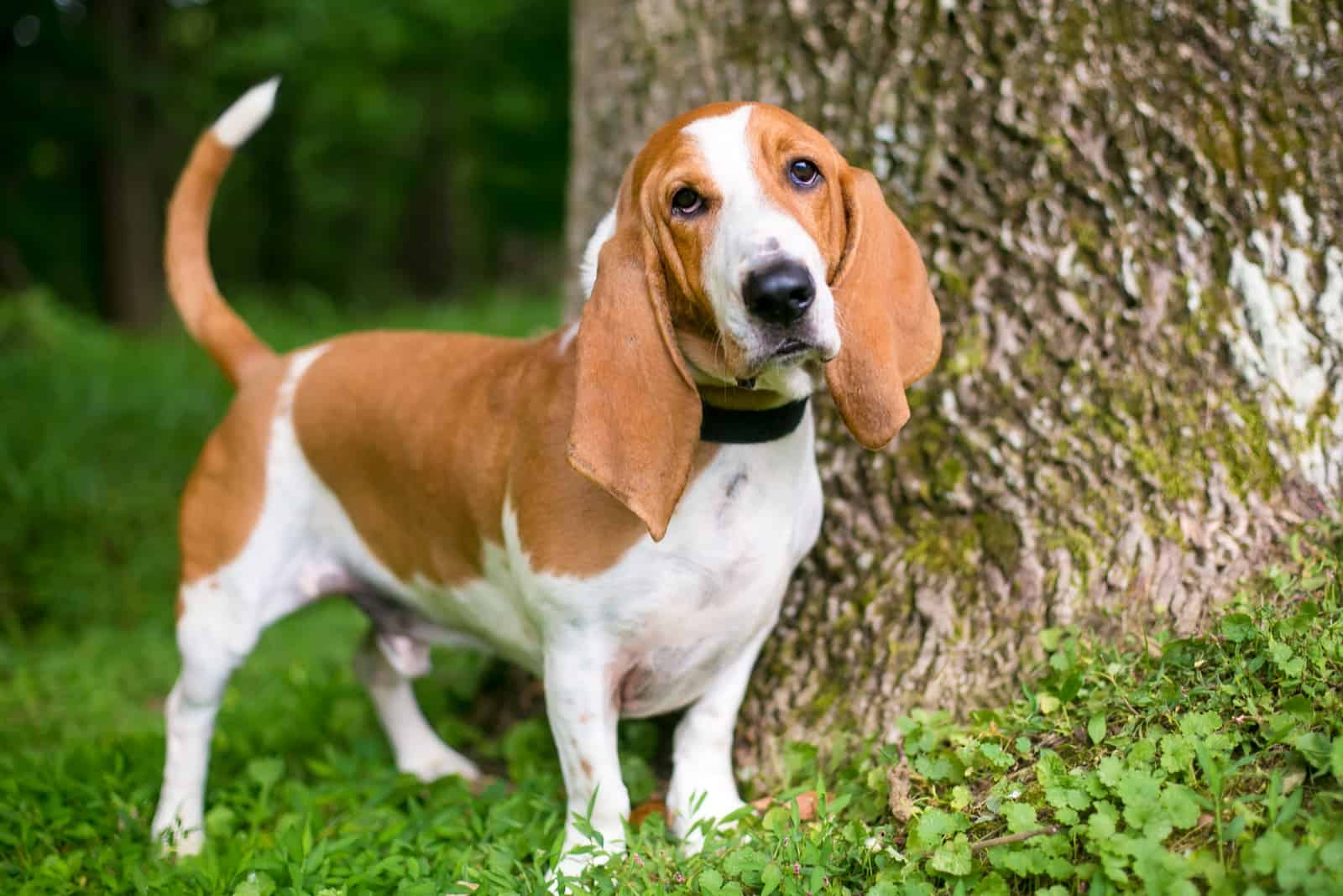
When we think of these dogs, we probably imagine the classic black, white, and tan tri-color coat. But, did you know that you can find Bassets in a whole range of colors?
Here are a few you might come across:
• Black and brown
• Brown and white
• Black and white
• Lemon and white
• Mahogany and white
• White, black, and red
• Red and white
• Blue and white
In theory, all coat colors and markings are accepted by the American Kennel Club (AKC), but in reality, only a few are considered worthy. In the official breed standards, the AKC states that “Any recognized hound color is acceptable, and the distribution of color and markings is of no importance.”
However, some colors will be deemed as ‘undesirable’, including blue. It’s interesting to note that the AKC doesn’t recognize the Basset Bleu de Gascogne, even though other respected bodies, such as the Kennel Club UK and the Fédération Cynologique Internationale (FCI) do.
What Is The Rarest Basset Hound Color?
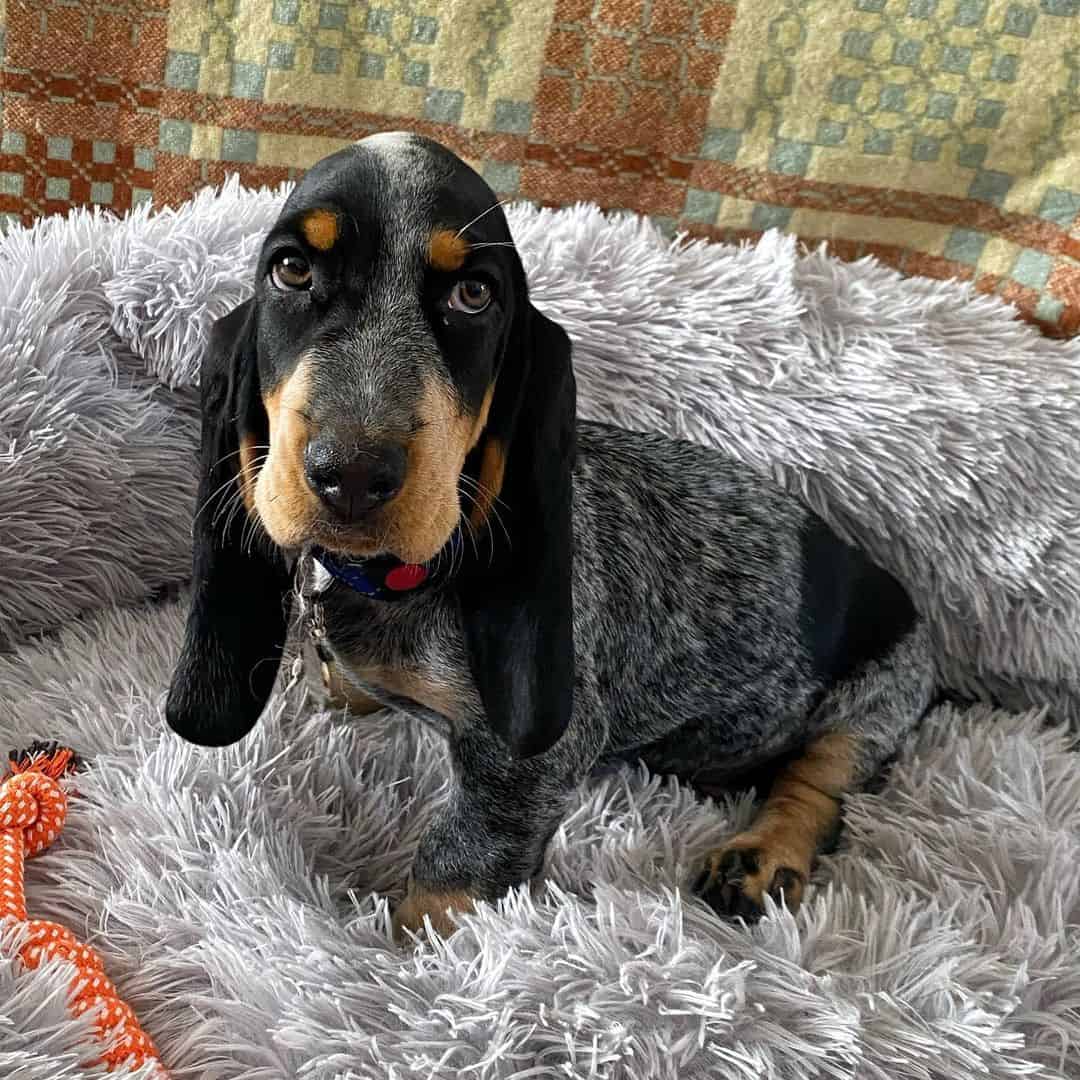
Photo from: @eddiebassetbleu
You might be able to guess the answer to this…
Yes, it’s blue!
This suits people on either side of the argument who are for and against these dogs; enthusiasts of the color see it as proof of how special this breed is, whereas those who regard it as a genetic mistake claim that it backs their theory.
Those who see Blue Basset Hounds as a rare breed accept that the gene causing the blue ticking may cause a health condition called color dilution alopecia (hair loss), but otherwise, these dogs will be no less healthy than those of any ‘normal’ coloring.
Color dilution alopecia has no cure, but it can be managed by controlling any secondary skin infection. Owners of a dog with this condition are advised to avoid brushing too vigorously or using a hard brush. They should also make sure to use suitable grooming products that aren’t too harsh, or else they will risk making the problem worse.
Alternatively, people who view the blue color as a genetic error encourage dog lovers to avoid buying Blue Basset Hounds and regard breeders who sell them as being irresponsible, accusing them of polluting the breed. They also claim that there are many other health conditions connected with the ‘blue’ gene in addition to color dilution alopecia.
Do Basset Hounds Change Colors?
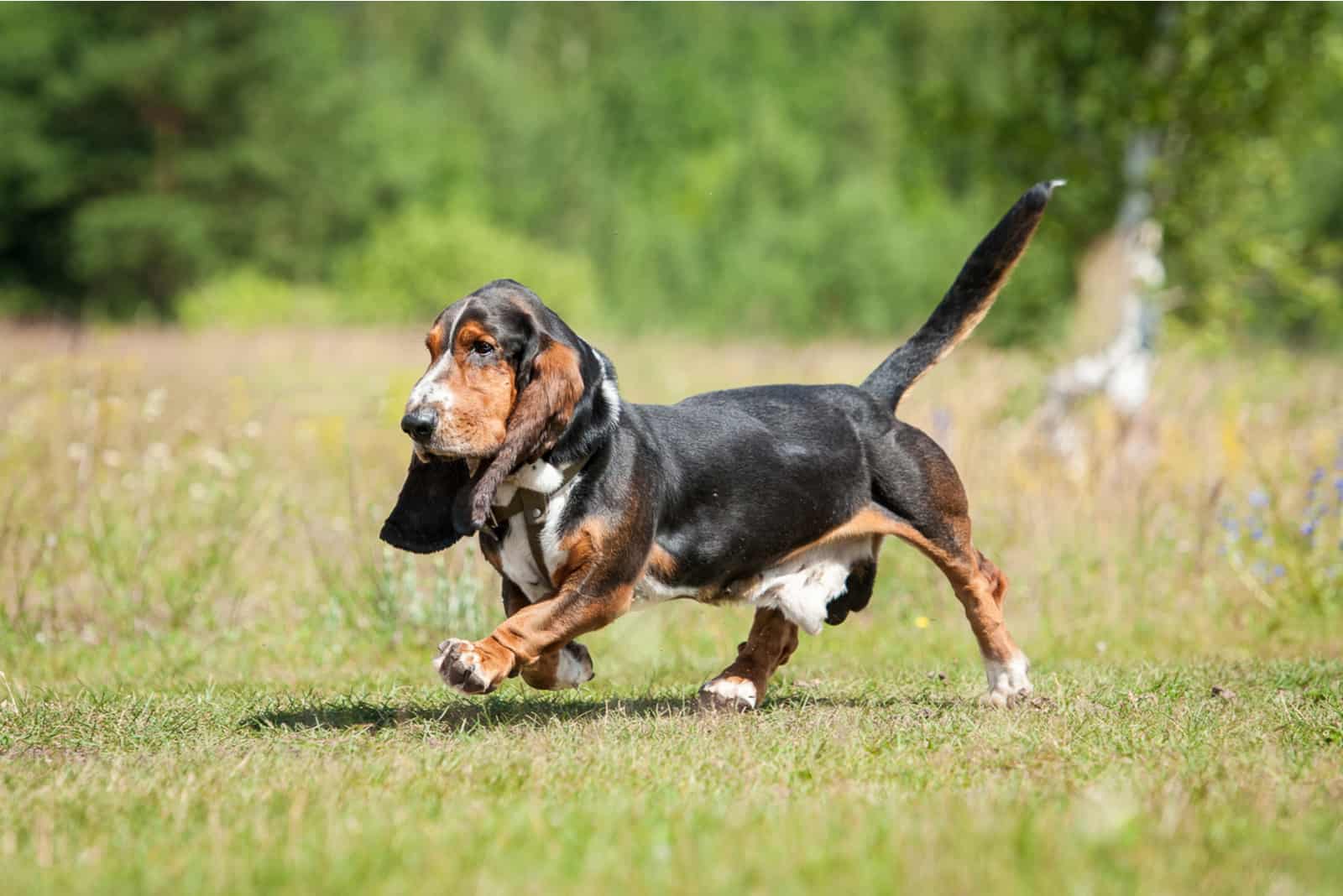
Yes! Many pups will start life with a black and white coat, but at least some of the black will fade to dark brown. Tri-colored pups tend to change the most out of all the colors, with the darker areas lightening after about 7 or 8 weeks.
Other colored pups will also probably change, with red often changing to light brown, and lemon sometimes developing into tan markings.
A color-changing puppy is entirely natural and nothing to be worried about! Once they are past the 12-week mark (which is when most dog owners register their pets), they should have their permanent colors.
However, some older dogs might experience a slight fading of the coat depending on things like exposure to sunlight, diet, and certain illnesses.
Blue Merle Basset Hound
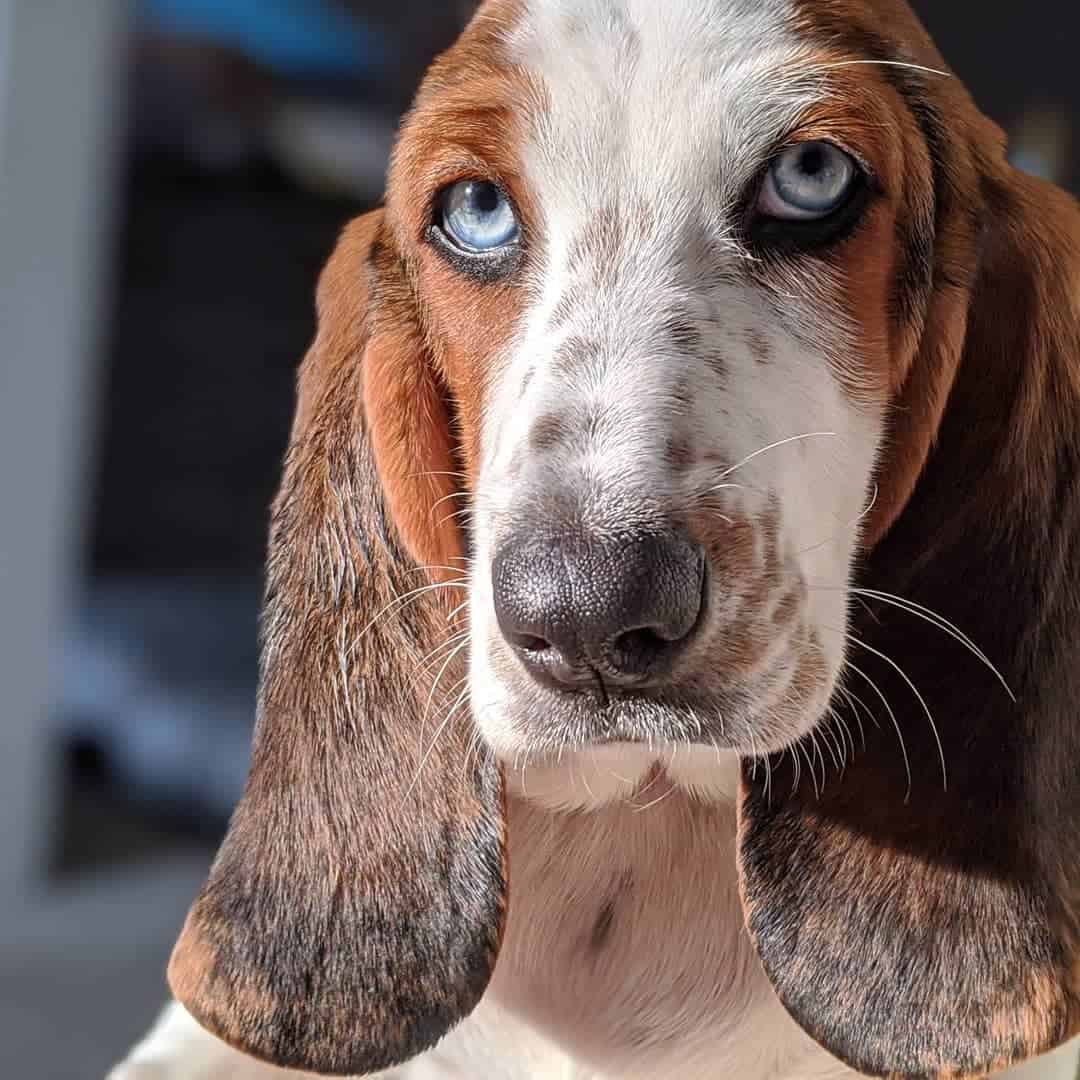
Photo from: @gusandmarniebassetbabies
These are different from the Blue Basset Hound as the coloring is caused by the merle gene that is present in many other dog breeds.
The word merle relates to a genetic trait that causes a particular type of patterning on a dog’s coat. It creates a mottled effect that can be in any color, and also influences skin pigmentation and eye color. Merle dogs often have blue eyes or one blue and the other of a different color!
A Blue Merle Basset Hound has a black and white coat, with a mottled gray pattern that gives the impression that the coat is blue. These dogs will usually have at least one blue eye.
The gene that causes a merle pattern has been linked with certain health problems, such as deafness and blindness. However, this is disputed by others who insist that merle Basset Hounds are just as healthy as any other color.
Blue-Eyed Basset Hound
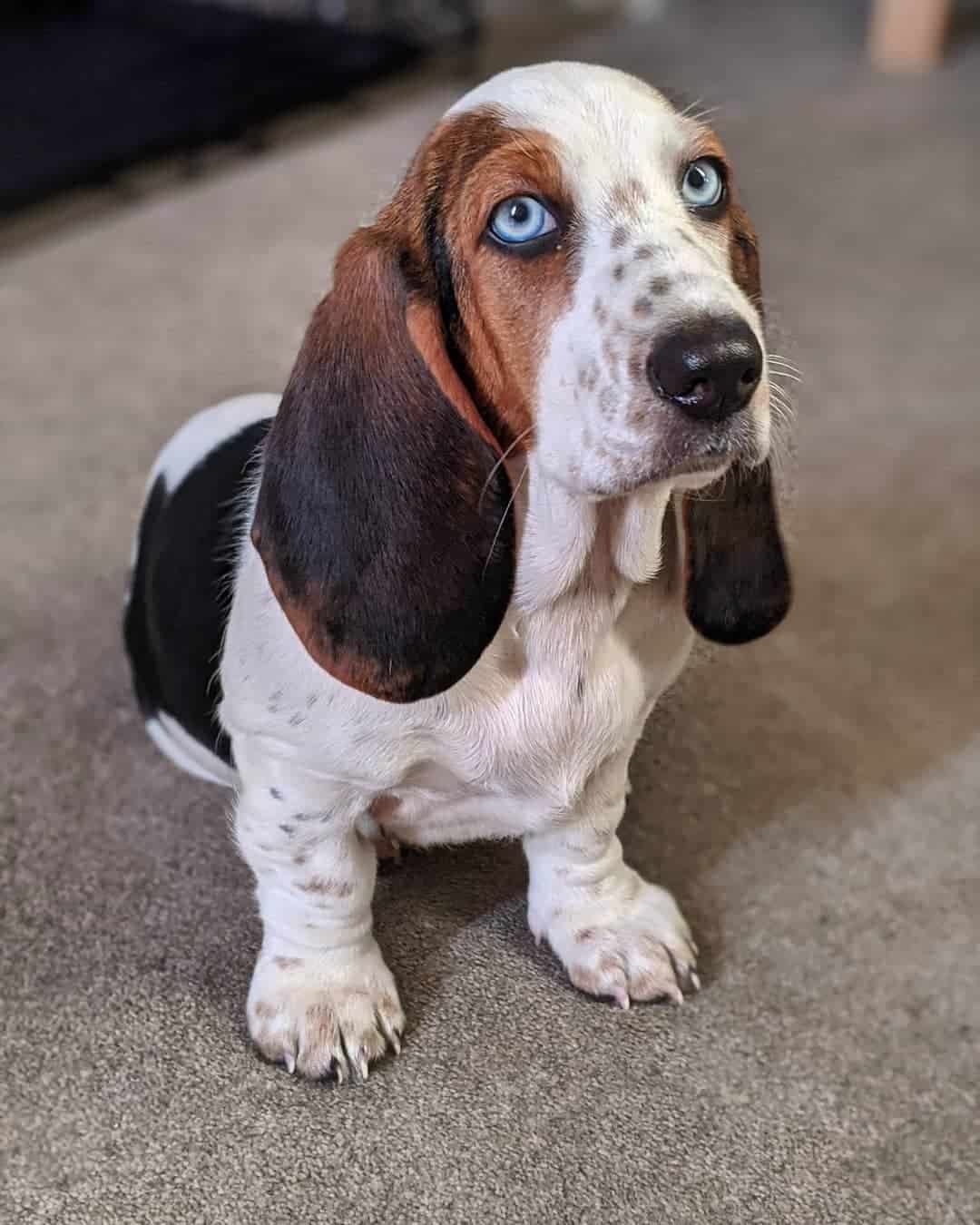
Photo from: @gusandmarniebassetbabies
Speaking of blue eyes, many people have a real problem with blue-eyed Basset Hounds! This is regarded as a serious fault and instantly disqualifies the dog from the show ring. Not that this would bother anyone who doesn’t care much for dog shows.
Those who dislike the blue-eyed pooches insist that it is purely because they are created by a faulty gene that pollutes the gene pool. They maintain that it will result in sub-standard litters, and that only disreputable breeders produce blue-eyed pups.
However, there are hundreds of Basset Hound owners who have happy, healthy dogs with beautiful blue eyes (or even just one blue eye!).
This type of debate is set to continue for some time to come as neither side is willing to concede. The trouble is, this makes things difficult for anyone who is researching Bassets with a view of buying one. Who do they believe? A blue-eyed Basset is a beautiful thing, but do you risk getting an unhealthy dog?
The time to be cautious is when someone tries to sell you any dog as being ‘rare’ and hikes the price accordingly. Conversely, anyone selling any dog for well under the average cost should be viewed with suspicion.
How Much Is A Blue Basset Hound?

Photo from: @3echo35
This is tricky, because of the debate as to whether they are a rare breed or not. It all depends on which side you take!
In the USA, the Basset Bleu de Gascogne will set you back between $900 and $1,200. A ‘normal’ Basset Hound will cost between $600 and $800, although those with a champion bloodline may cost as much as $1,500.
But, what about the Blue Basset Hound? Many breeders avoid producing them because they see these dogs as ‘undesirable’. Searching for Blue Basset Hound pups can be a chore as they often don’t show up in search results, although you will probably see some Basset Bleu de Gascognes (Blue Gascony Bassets) listed.
If you really want a Blue Basset Hound, speak to a few breeders, especially those who specifically breed Blue Gascony Bassets.
Blue Basset Hound Puppy
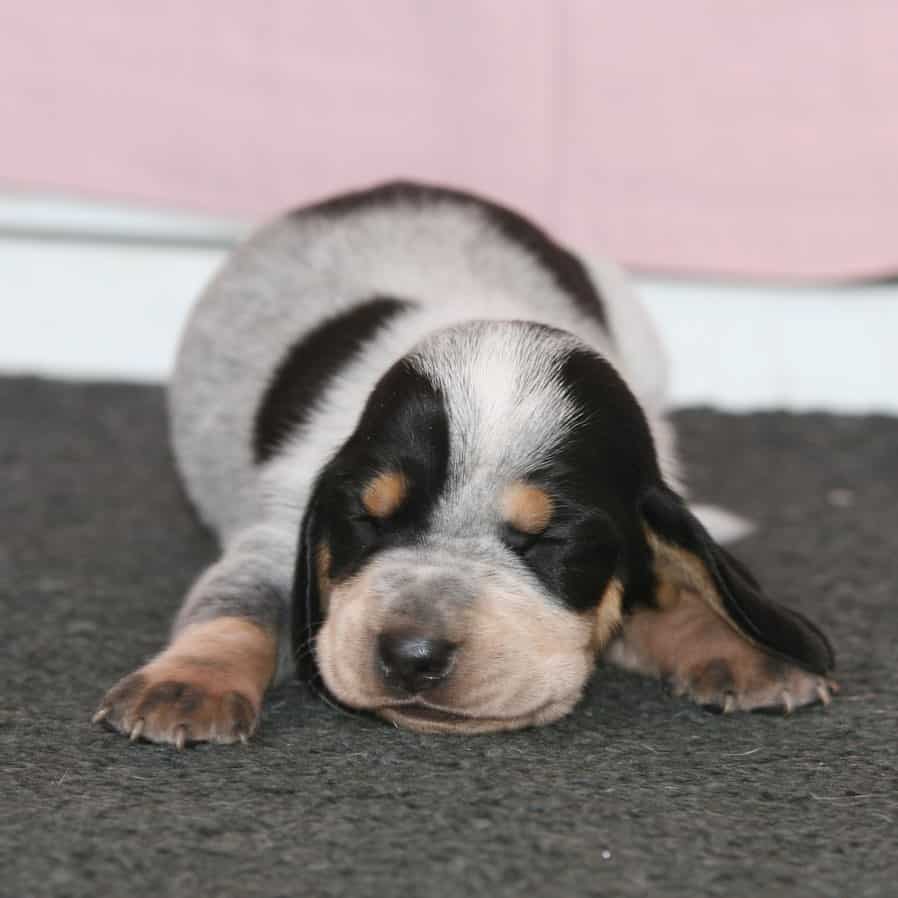
Photo from: @eddiebassetbleu
There are several ways you can get your Blue Basset, but the two best routes are either buying from an established, reputable breeder or adopting from a shelter or rescue center.
As adorable as these dogs are, many are given up to shelters because the owners suddenly discover that Bassets drool! If this is news to you and you don’t think you could cope with a drooling dog, then you might want to consider a different breed.
Getting hold of a blue pup might prove difficult, as we already mentioned, so you might have to wait for a while. Breed clubs are a good source of information, so you might want to contact some to ask for a bit of help and advice.
Never be tempted to use a puppy mill (also called a puppy farm) or a backyard breeder. They rarely have the welfare of the dogs in mind, and often keep them in appalling conditions. Any puppy bought from these places is likely to be sickly and weak, with a host of inherited health issues.
Once you get your puppy home, there are a few things to keep in mind.
Whatever their color, all Basset Hound puppies are prone to joint problems if they have strenuous exercise or if they are put under too much strain at the joints. Try not to let them jump off furniture or down steps. If you take them in the car, always pick them up and support their back rather than let them jump in or out.
These pups are quite top-heavy as their front end is much bulkier than their back. Because of this, they are not the best swimmers in the world, and can easily get into difficulty in the water. If you have a pool or a pond, keep a close eye on that pup!
Basset Hounds are famous for their stubbornness, so training them can be ‘interesting’. Crate training is one of the best ways to contain your pup until they have learned how to behave. Never use harsh words. Obedience classes are a great way to train your Blue Basset Hound puppy into good habits.
You’ll need to make sure that your backyard is secure, with no gaps or escape routes – once these dogs catch an interesting scent, they’ll be off!
Obesity is a real problem for Bassets. Make sure you don’t overfeed your pup or you’ll be putting their health at risk. Feeding guides on dog food packs tend to be vague (possibly encouraging larger portions so you buy more!), so check with your vet if you’re unsure of how much you should be giving your doggy friend.
Do Basset Hounds Have Health Problems?
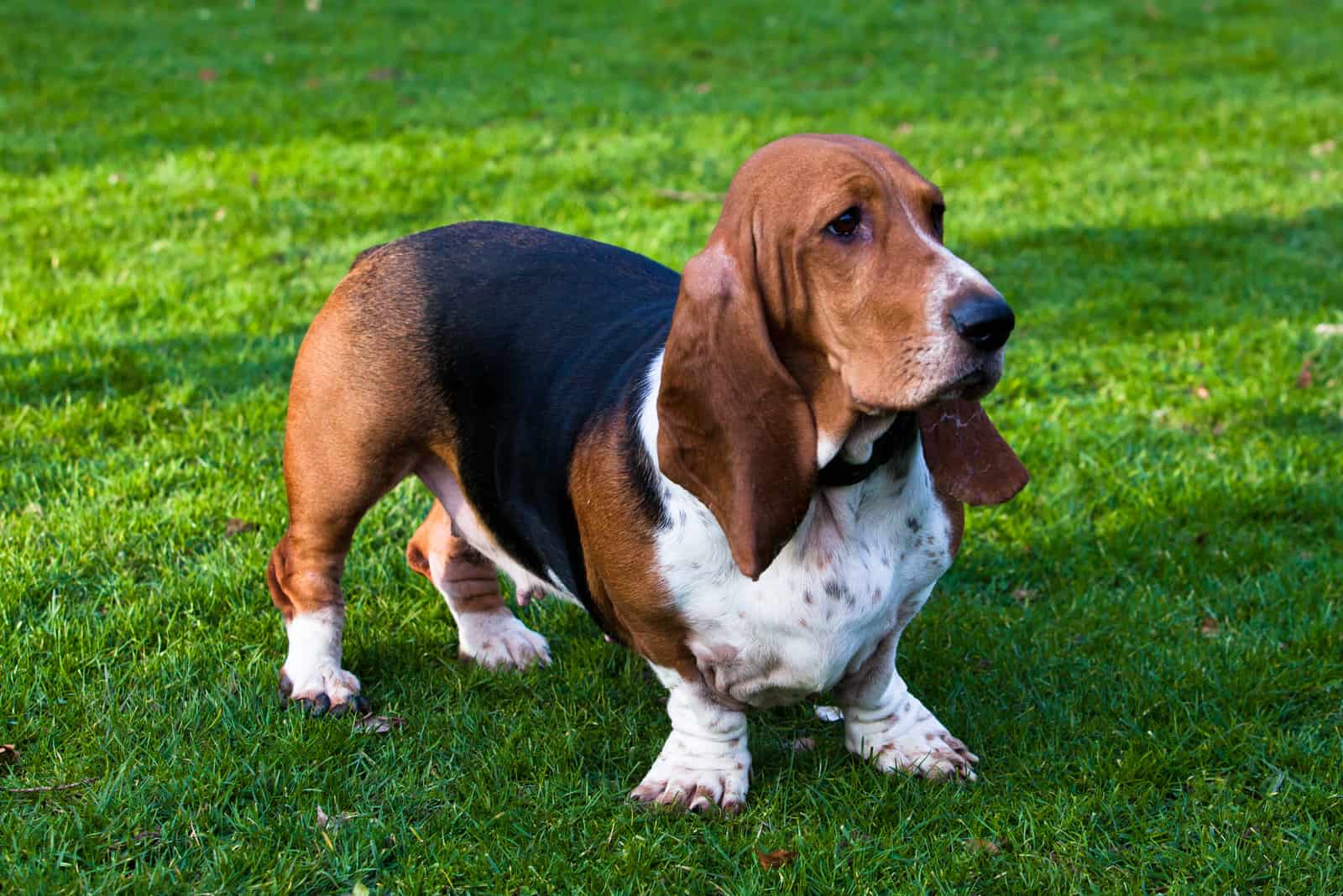
Unfortunately, they do. Just like any other breed, the poor Basset has its share of health issues.
• Obesity – Overeating and a lack of exercise can cause your dog to gain excess weight. This puts stress on the joints and spine, and can increase the risk of arthritis, as well as putting strain on the heart. Bassets are especially prone to obesity because of the breeding process used for many years to produce a distinctive look.
• Skin infections – Basset Hounds are susceptible to yeast infections of the skin, and skin fold dermatitis, especially in those long ears. Also, because their bellies sometimes rub against the ground, they can pick up infections there.
• Bloat – Also known as Gastric Dilatation-Volvulus (GDV), bloat is a potentially fatal condition where the stomach fills with gas. It then starts to twist, cutting off the blood supply to the vital organs. This condition is more common in larger, deep-chested dog breeds, usually occurring after the dog has eaten (or drank) too much too quickly, especially when followed by strenuous exercise.
• Slipped disc – A painful condition of the spine that can cause paralysis if not treated.
• Eye problems – Glaucoma is the main eye problem that affects Basset Hounds. Fluid builds up in the eyes, potentially causing blindness.
• Elbow dysplasia – A condition caused by a malformed elbow joint. This can be very painful, leading to arthritis and lameness. Severe cases are usually treated through surgery.
This is a handful of the most common health problems that can affect Bassets. Out of these, obesity probably affects more dogs than anything else.
Some people believe that blue Basset Hounds possess a faulty gene that will cause additional health issues.
The average lifespan of a Basset Hound is between 12 and 13 years, but specific data on the lifespan of Blue Basset dogs is almost impossible to find because detailed records aren’t kept.
Whether or not you get a blue one, health care plays a major part of owning any dog. Hopefully, you’ll have a healthy animal, but you need to be prepared for any medical expenses.
Blue Heeler Basset Hound Mix
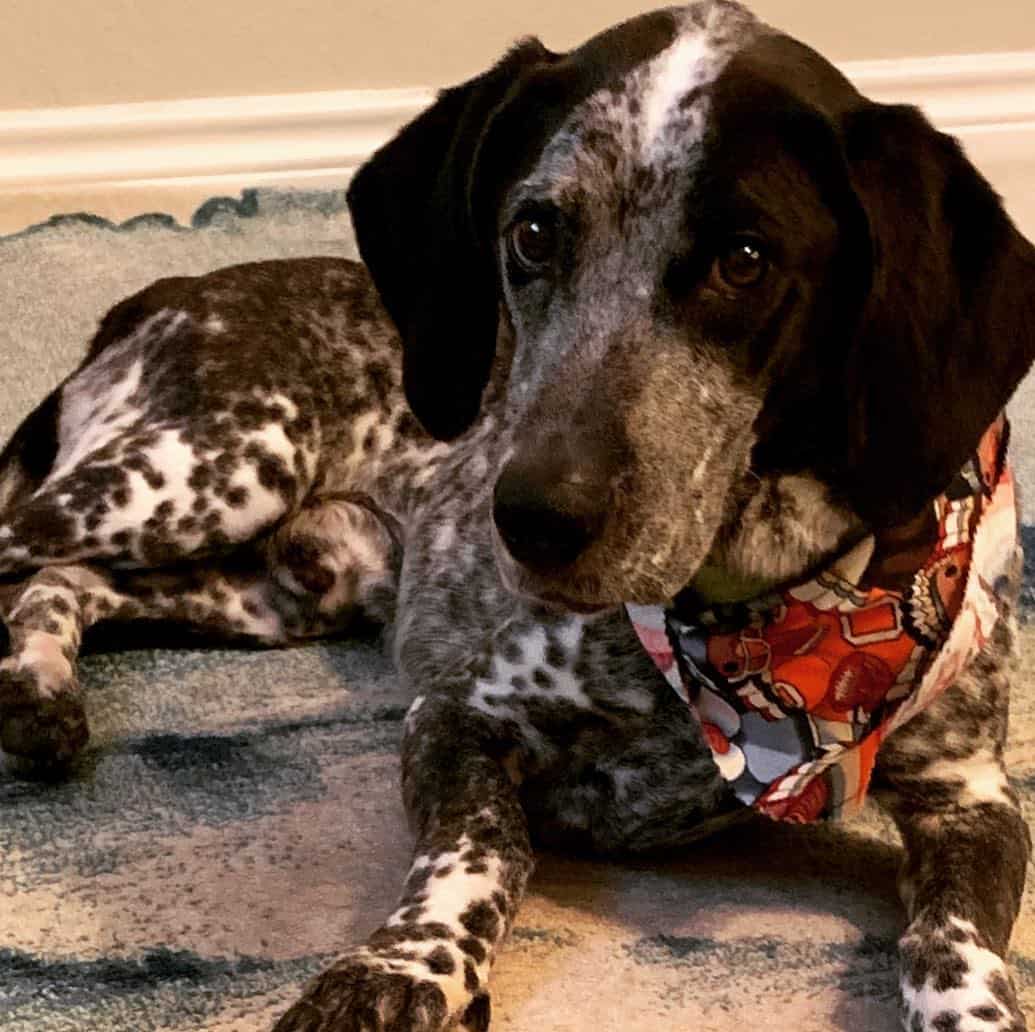
Photo from: @justbreathe_7
Something else to add to the confusion!
The Blue Heeler is also known as the Australian Cattle Dog, and it has been crossed with the Basset Hound to produce a Basset Heeler.
This shows up when you Google Blue Bassets simply because you have the words ‘blue’ and ‘Basset’ in the search, but it is not a Blue Basset!
This is a completely separate (and beautiful) crossbred dog. Besides the Blue Heeler Basset Hound mix, there are other amazing Basset Hound mixes, so check them out, too!
What’s Next For The Blue Basset?
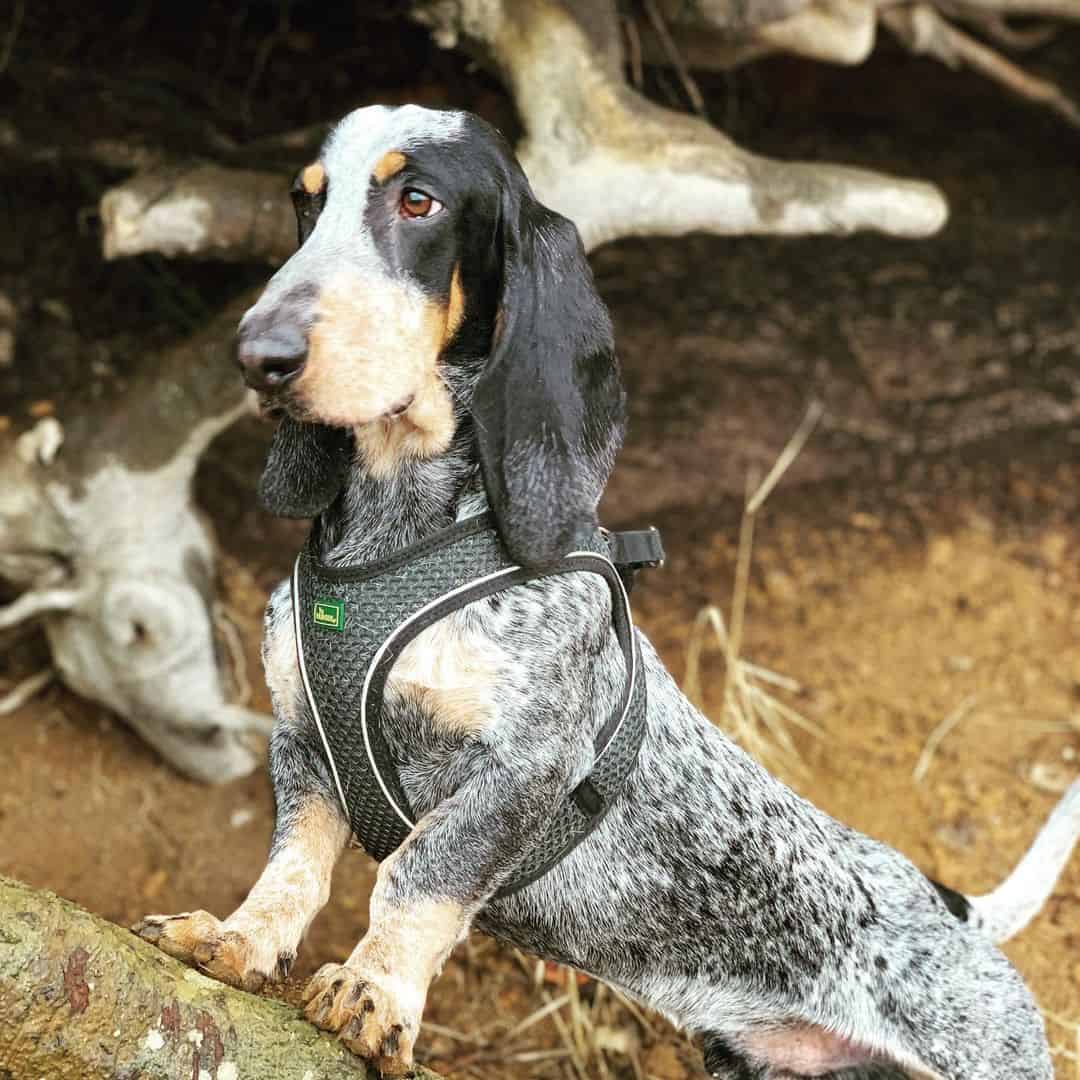
Photo from: @lthaulow
Some sources say that the AKC ordered all mention of the Blue Basset/Blue Gascony Basset to be removed or destroyed in 1964, which would account for the lack of data and absence of records.
The fact that it doesn’t recognize or acknowledge them, whether as a genetic mistake or as a rare breed, has caused many problems over the years. Though its reasoning may be sound – the desire to stop genetic defects being passed on – its actions have resulted in confusion and recriminations for buyers and breeders.
However, the AKC doesn’t ignore Blue Basset Hounds entirely. As we mentioned above, the color is accepted but is deemed ‘undesirable’. They are supported in this stance by some Basset enthusiasts who strongly advise against buying a ‘blue’.
What’s strange is that other kennel clubs around the world are happy to recognize these Blue beauties, and they have the knowledge and experience to understand the potential risks of any faulty genes passed on through the breeding programs.
So, what can we expect in the future? Will the AKC relent and recognize the Blue Basset?
At the moment, it’s impossible to say, but hopefully, one day, they will do so. At the very least, the confusion surrounding these wonderful dogs needs to be addressed so that the information is freely open and available, allowing dog lovers the opportunity to choose one if they so desire.
In the meantime, if you want to get a Blue Basset Hound for yourself, take your time and do some research. Choose a breeder very carefully, and visit them if you can as you can tell a lot from the way the place looks. Ask lots of questions about the breeding program and the parent dogs. Reputable breeders will be happy to speak to you about their dogs.
So, is the Blue Basset Hound, also called the Blue Gascony Basset, a rare breed? Or, is it a normal Basset Hound that has a faulty gene, making it undesirable?
Well, it depends on who you ask!
Read Next: Miniature Basset Hound: A Full Guide To The Cutest Low-Rider
